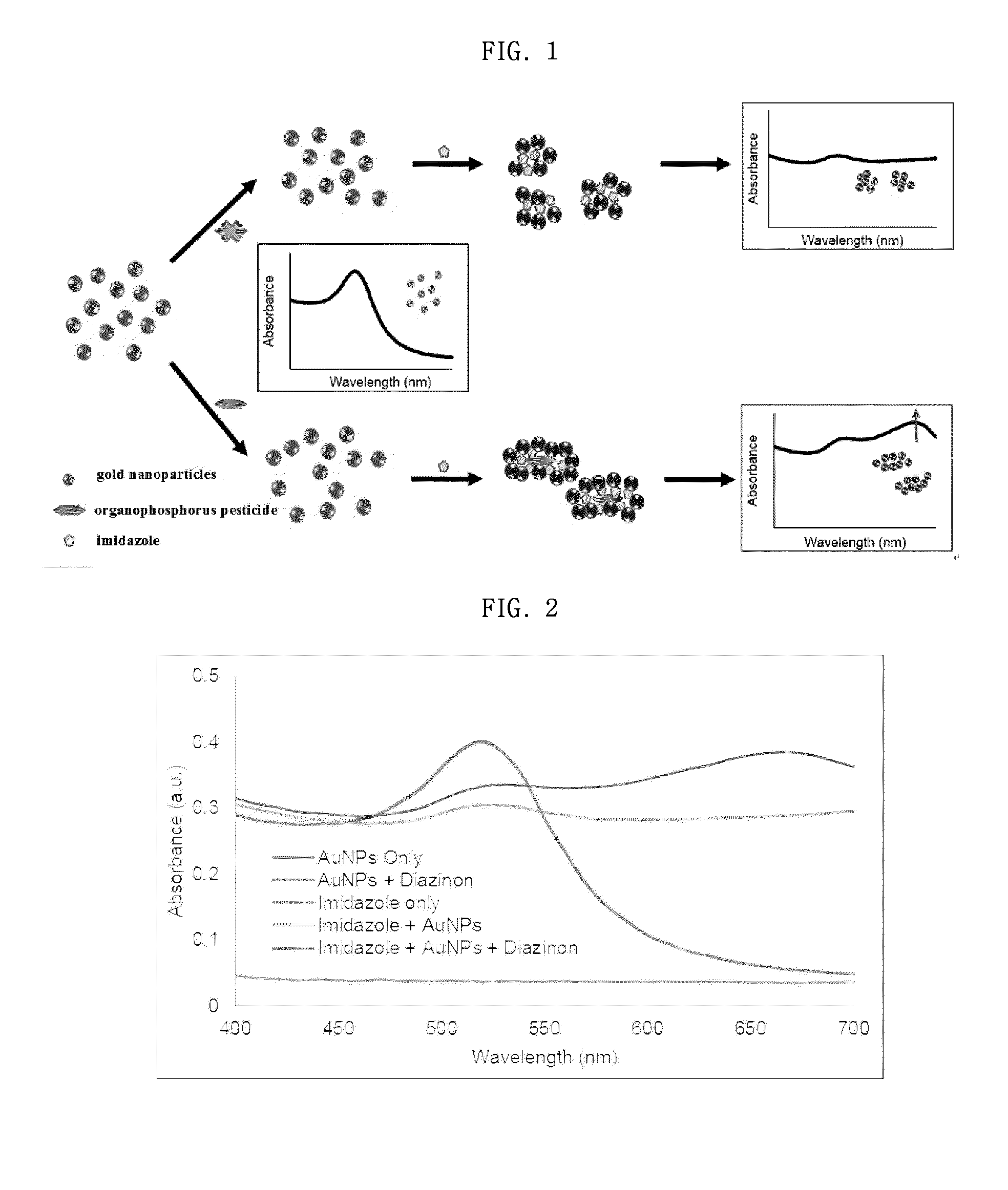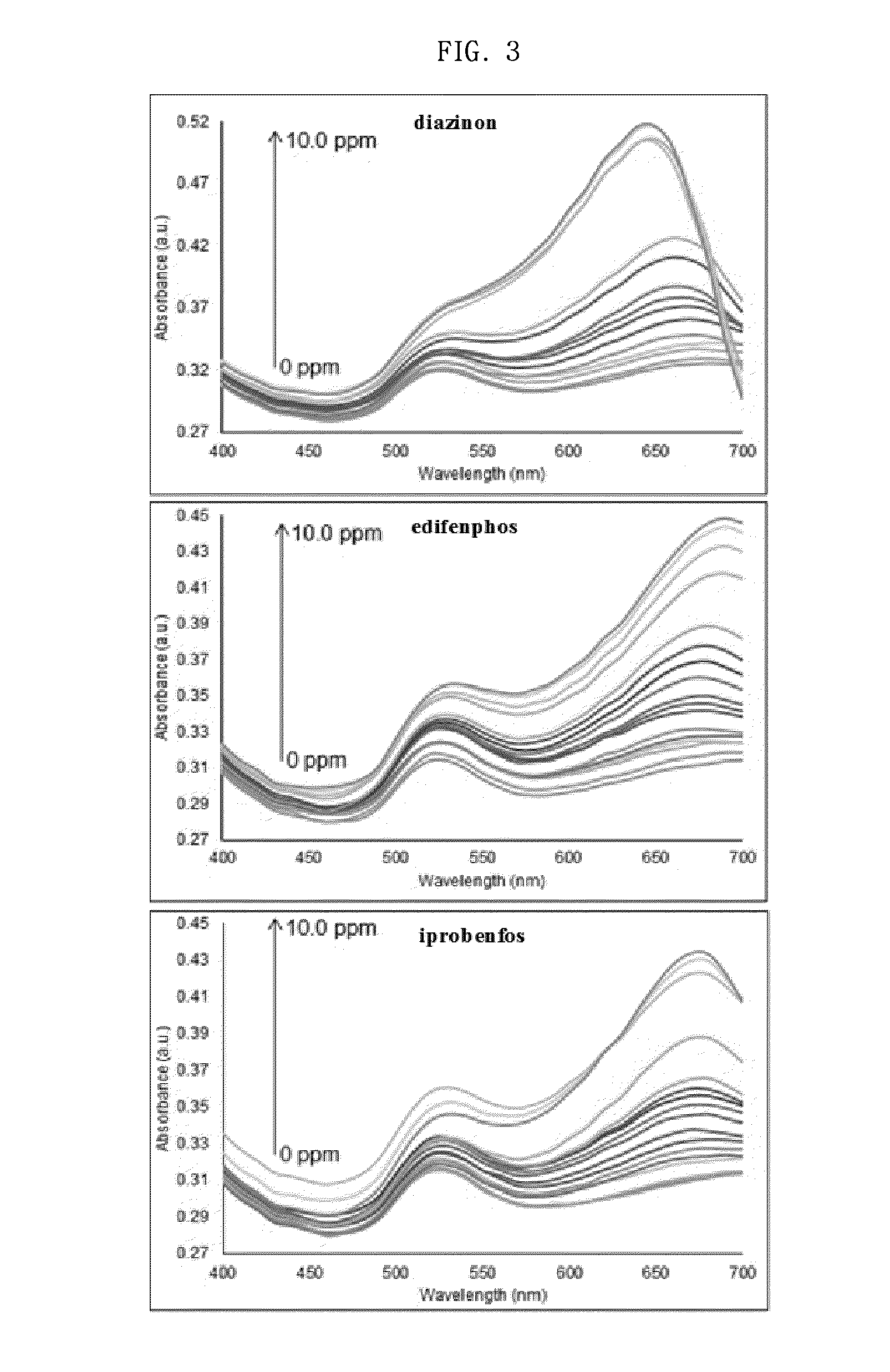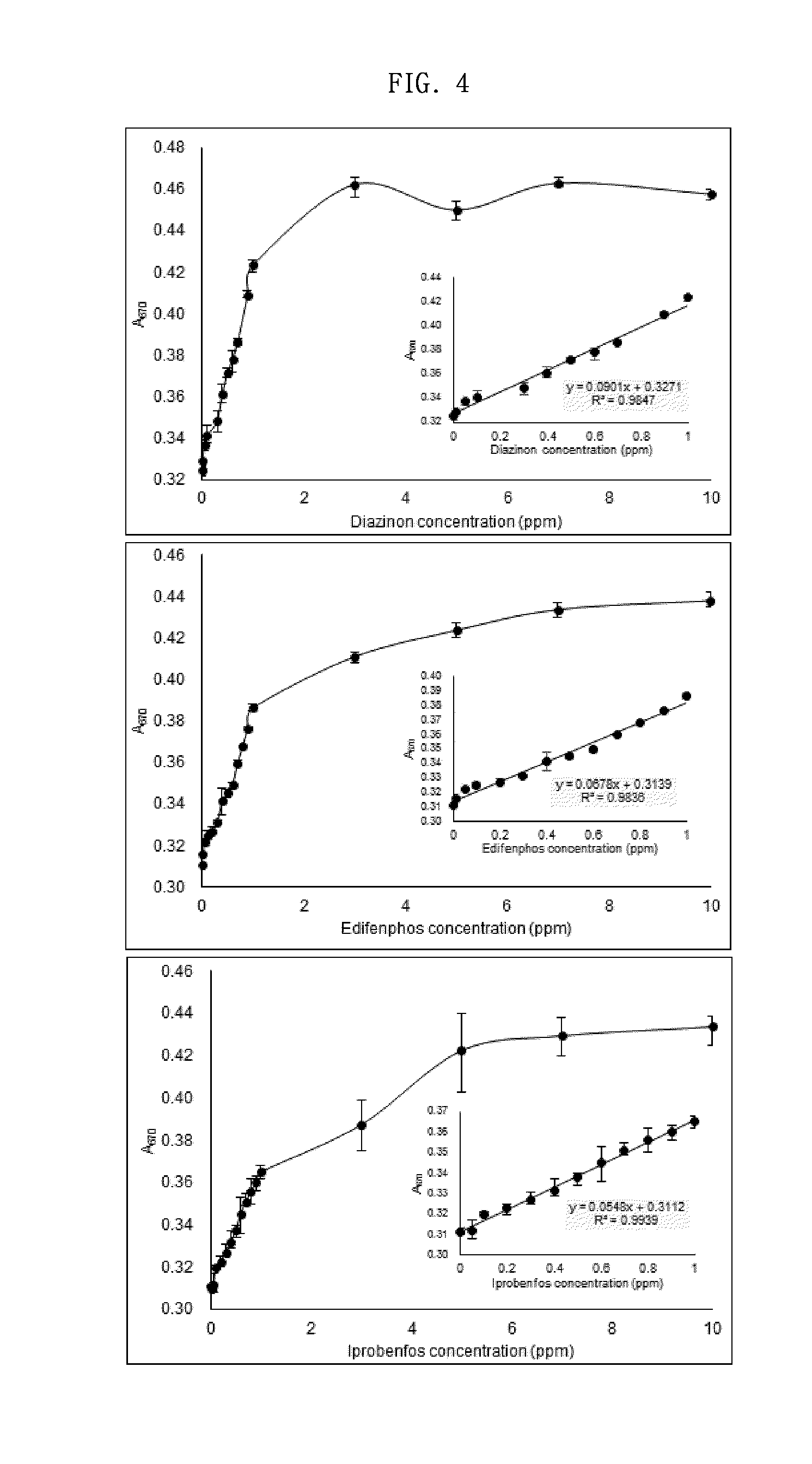Sensor system for detecting organophosphorus residues by inducing coagulation of gold nanoparticles
a technology of gold nanoparticles and sensors, applied in the field of detecting organophosphorus pesticide residues, can solve the problems of large use volume, adverse effects on human health and the ecosystem, and high toxic to humans and livestock
- Summary
- Abstract
- Description
- Claims
- Application Information
AI Technical Summary
Benefits of technology
Problems solved by technology
Method used
Image
Examples
example 1
Measurement of the Change in Absorption Spectrum Caused by Adding Gold Nanoparticles and / or Imidazole to Organophosphorus Pesticides
[0062]For diazinon that is an organophosphorus pesticide, 10 μl of the pesticide was dissolved in 10 mL of 10% methanol to a concentration of 1000 ppm. The solution was then diluted with 10% methanol to a concentration of 1 ppm to prepare a sample.
[0063]When gold nanoparticles and imidazole were added to the organophosphorus pesticide, a rapid change in the absorption spectrum (the shift of the peak) occurred. Thus, an experiment for examining an element that caused this change was performed.
[0064]1-1: Reaction of Diazinon with Gold Nanoparticle Solution
[0065]First, a solution obtained by diluting the organophosphorus pesticide diazinon to a concentration of 1 ppm was mixed with a solution of 10 nM gold nanoparticles at a volume ratio of 2:1, and the mixture was allowed to react at room temperature.
[0066]As a result, as shown in FIG. 2, the characterist...
example 2
Measurement of Absorbance for Each of Organophosphorus Pesticides as a Function of Concentration
[0072]For each of organophosphorus pesticides, including diazinon, edifenphos, iprobenfos, malathion, tebuconazole, acetamiprid, fenitrothion and fenthion, pesticide samples having various concentrations ranging from 0.01 ppm to 10.0 ppm were prepared. Then, each concentration of the organophosphorus pesticide sample, a solution of 10 nM gold nanoparticles and a solution of 0.3 mM imidazole were mixed at a volume ratio of 2:1:1, and a change in the absorption spectrum of each mixture was measured with a spectrophotometer at a wavelength of 400-700 nm (FIG. 3). Based on the results of the measurement, standard curves were obtained (FIG. 4).
[0073]As a result, as shown in FIG. 3, the position of the peak in the absorption spectrum was 670 nm and was the same between the concentrations of the pesticide, but a great difference in absorbance between the concentrations of the pesticide appeared,...
example 3
Change in Zeta Potential of Mixture of Organophosphorus Pesticide, Gold Nanoparticles and Imidazole
[0076]An organophosphorus pesticide and an imidazole solution were sequentially added to a gold nanoparticle solution (the concentration and the mixing ratio were the same as described in Example 1-3), the zeta potential of the gold nanoparticles by the addition of each solution was measured with a zeta potential particle size analyzer. The zeta potential of the gold nanoparticles was −35 mV, and when the organophosphorus pesticide was added to the gold nanoparticles, the zeta potential was −36 mV, which did not substantially change. However, when imidazole was added to each sample, the zeta potential greatly increased to −12 mV, suggesting that imidazole greatly influences the aggregation of gold nanoparticle (FIG. 6), as described in Example 1-3.
PUM
| Property | Measurement | Unit |
|---|---|---|
| wavelength | aaaaa | aaaaa |
| diameter | aaaaa | aaaaa |
| wavelength | aaaaa | aaaaa |
Abstract
Description
Claims
Application Information
 Login to View More
Login to View More - R&D
- Intellectual Property
- Life Sciences
- Materials
- Tech Scout
- Unparalleled Data Quality
- Higher Quality Content
- 60% Fewer Hallucinations
Browse by: Latest US Patents, China's latest patents, Technical Efficacy Thesaurus, Application Domain, Technology Topic, Popular Technical Reports.
© 2025 PatSnap. All rights reserved.Legal|Privacy policy|Modern Slavery Act Transparency Statement|Sitemap|About US| Contact US: help@patsnap.com



